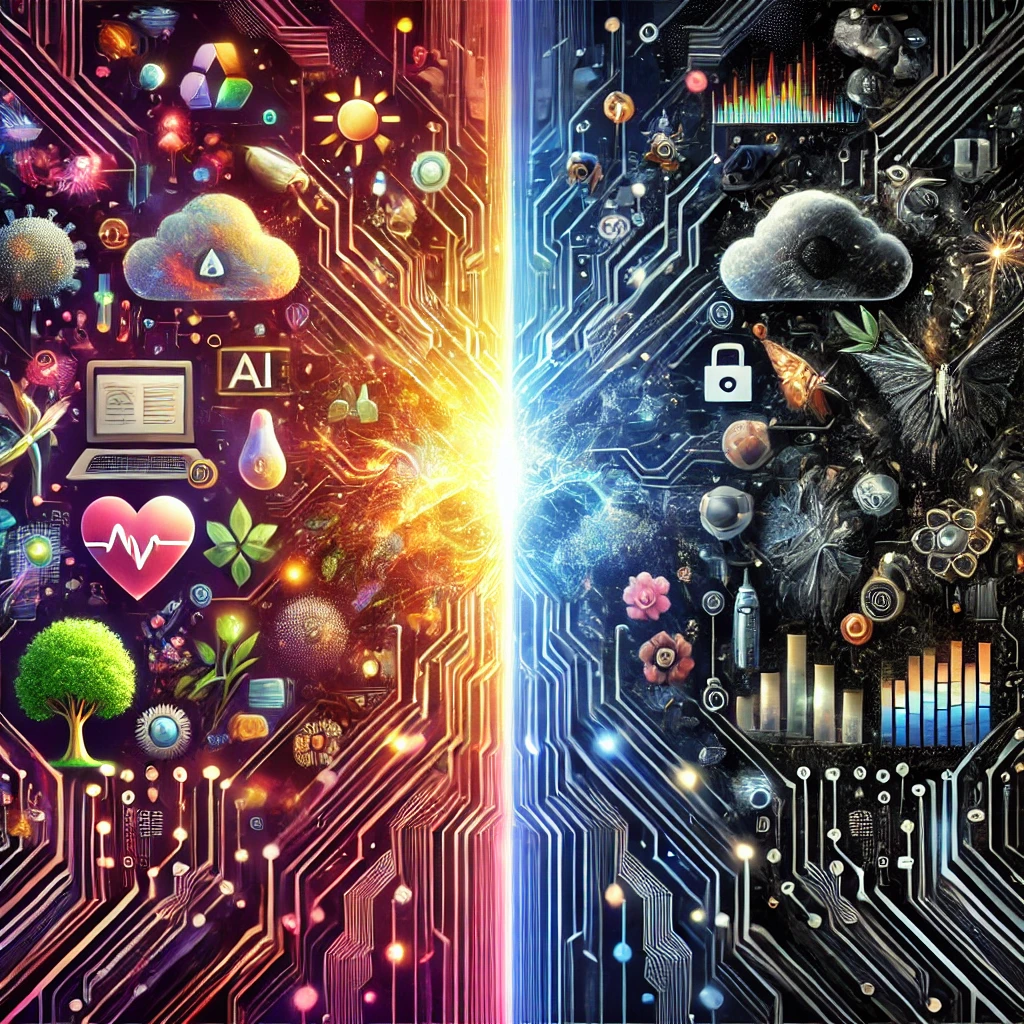
Artificial intelligence (AI) is everywhere these days, shaping industries, creating opportunities, and yes, dominating headlines. From jaw-dropping breakthroughs like discovering new medicines to the viral hilarity of the Pope in a white puffer coat, AI seems to be both thrilling and terrifying us in equal measure. But beneath the memes and marvels lies a critical truth: AI’s impact isn’t just about the future—it’s about the very real consequences we’re facing today.
Is AI Destroying Humanity? Not So Fast.
A recent email from a stranger accusing my work in AI of being the harbinger of humanity’s doom got me thinking. While the fear of doomsday scenarios—like the “singularity” or robot uprisings—grabs attention, it’s the present-day implications of AI that deserve our focus. AI isn’t a rogue entity acting alone; AI’s impact is embedded in society , influencing people and the planet in ways we’re only beginning to understand.
The Hidden Costs of AI
Let’s unpack the tangible impacts AI is having right now:
- Environmental Damage
- Training large AI models consumes vast amounts of energy, with significant carbon emissions to match. For example, training the Bloom model used as much energy as 30 homes in a year, emitting 25 tons of CO₂—equivalent to driving around the Earth five times. And that’s a relatively efficient model compared to others like GPT-3, which emit 20 times more carbon.
- The trend of “bigger is better” in AI has led to models growing 2,000 times in size over just five years, compounding environmental costs.
- Exploitation of Creative Work
- Many AI models are trained on datasets filled with content—art, writing, music—taken without the creators’ consent. Tools like “Have I Been Trained?” are empowering artists to see how their work has been used and fight back. One result? A class-action lawsuit against AI companies for copyright infringement.
- Bias in AI Systems
- AI systems often replicate societal biases, perpetuating stereotypes and discrimination. From facial recognition systems that fail to identify women of color to language models that reinforce outdated gender roles, these biases have real-world consequences, including wrongful accusations and arrests.
Tools for Accountability
We can’t afford to let AI develop unchecked we are responsible for AI’s impact on society. That’s why researchers and innovators are creating tools to measure and mitigate its impacts:
- CodeCarbon: Tracks AI models’ energy use and carbon emissions, helping developers make more sustainable choices.
- Stable Bias Explorer: Highlights biases in image generation models, providing a way to hold them accountable and push for more inclusive representation.
Why Transparency Matters
AI is deeply integrated into our daily lives—from the apps we use to critical systems like healthcare and law enforcement. Yet much of it remains a “black box,” its processes hidden even from its creators. To ensure AI works for us, not against us, we need:
- Companies to disclose environmental and ethical impacts.
- Legislators to craft informed policies regulating AI use.
- Users to demand AI tools that prioritize sustainability, fairness, and transparency.
The Road Ahead: A Collective Effort
The future of AI isn’t set in stone. We can choose AI’s impact on society, the direction it takes. By focusing on the real, present challenges of AI—rather than apocalyptic hypotheticals—we can create a foundation for responsible innovation. That means building tools, enforcing ethical standards, and holding companies accountable today, not tomorrow.
When I replied to that email accusing me of ending humanity, I had one thing to say: The existential risks of AI are a distraction. What really matters is tackling its tangible impacts now. Together, we can ensure AI serves us all—without destroying the planet or exploiting its people.
Join the Conversation
What do you think about the current state of AI? Are we doing enough to address its impacts? Share your thoughts in the comments or on social media using #AIResponsibility and #EthicalAI.
